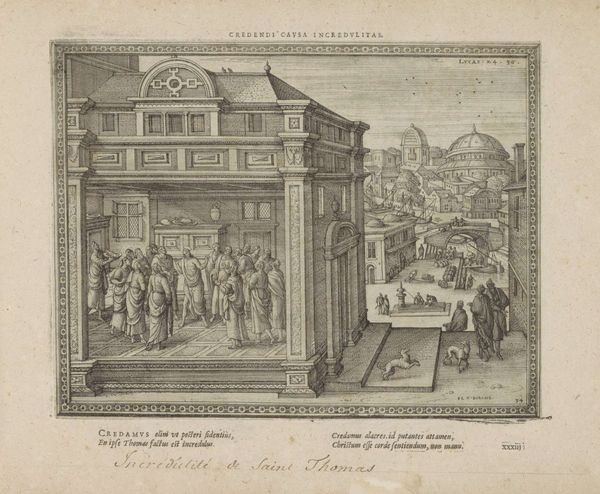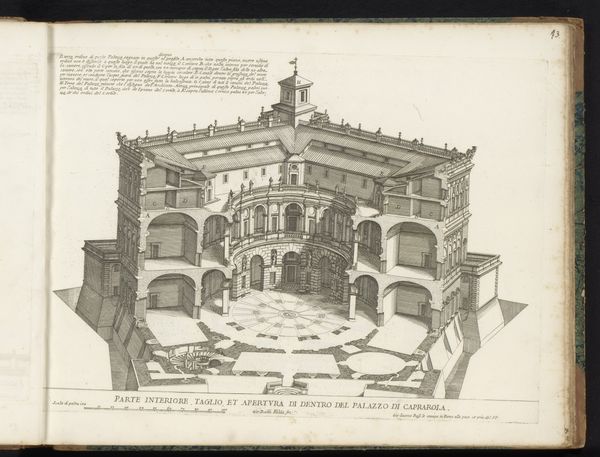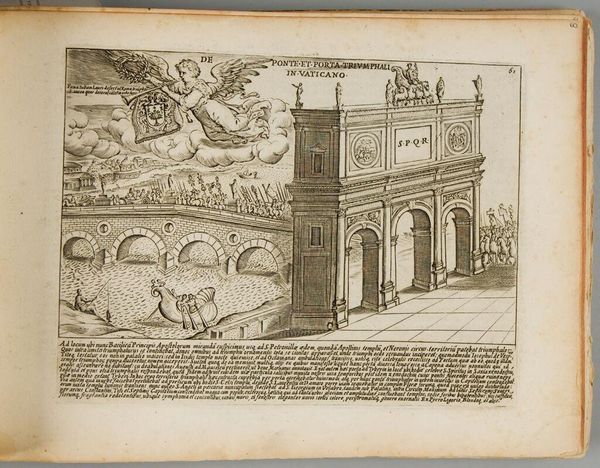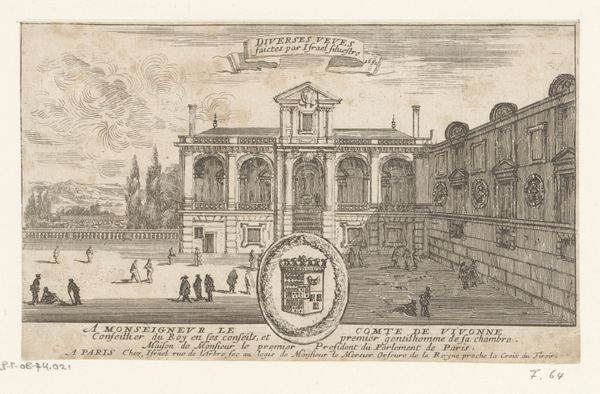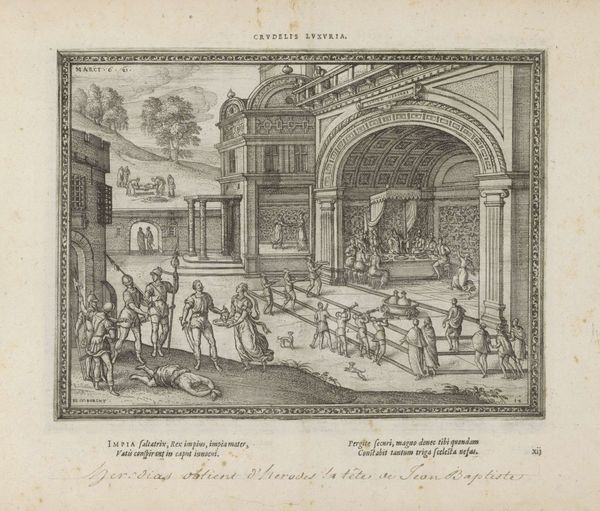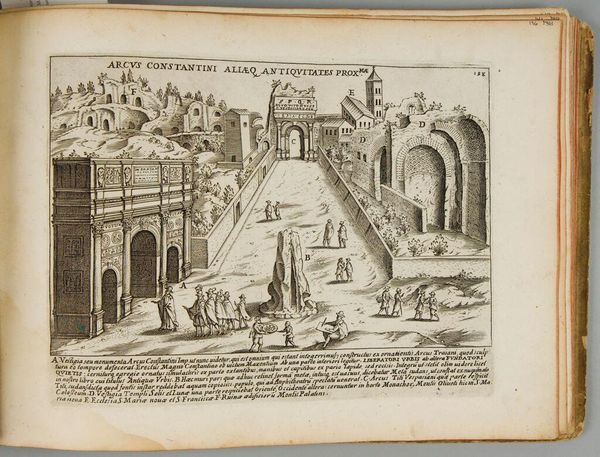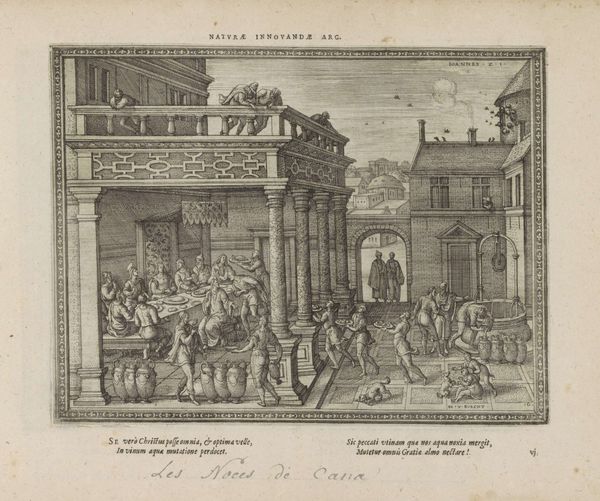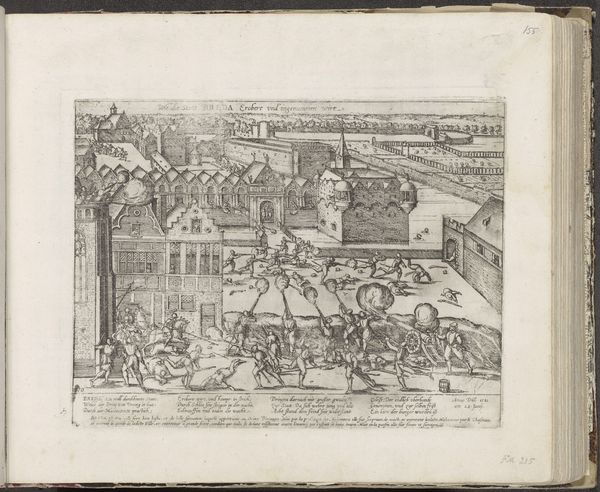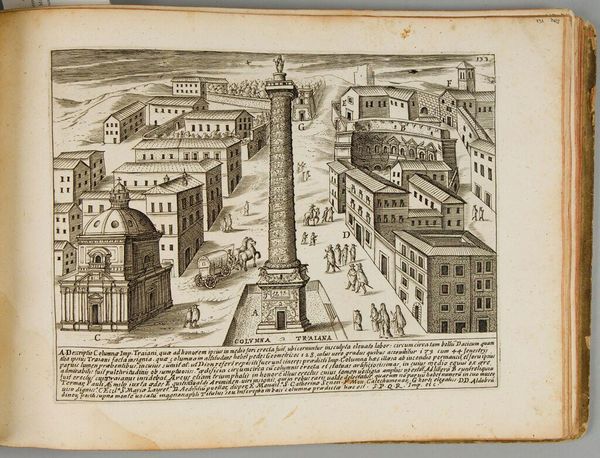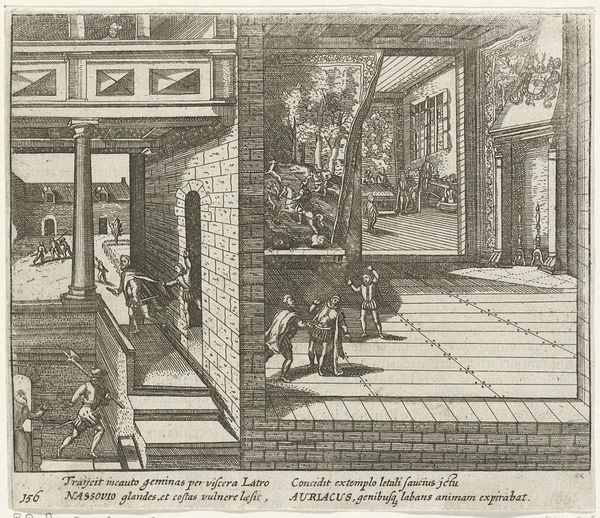
Gelijkenis van de farizeeër en de tollenaar in de tempel 1582 - 1613
0:00
0:00
pietervanderiborcht
Rijksmuseum
print, engraving
#
medieval
# print
#
cityscape
#
genre-painting
#
history-painting
#
engraving
Dimensions: height 187 mm, width 244 mm
Copyright: Rijks Museum: Open Domain
This is a 16th-century print by Pieter van der Borcht, depicting the parable of the Pharisee and the Tax Collector in the Temple, rendered in ink on paper. Here, notice the contrast in posture: the Pharisee stands erect, arms raised in ostentatious prayer, while the Tax Collector bows his head, hands clasped in humility. This motif of contrasting gestures—pride versus humility—echoes across cultures. Think of the Egyptian pharaohs depicted in rigid, divine poses compared to supplicants kneeling before them. The raised arms of the Pharisee, a gesture meant to signify piety, has evolved over time, sometimes appearing in secular contexts to symbolize triumph or victory, yet its roots remain entwined with religious expression. Consider the psychological impact of these postures: one exudes confidence, the other contrition. This image is a testament to how symbols persist, their meanings molded by time and culture, yet forever tethered to their origins in the human drama of faith and redemption.
Comments
No comments
Be the first to comment and join the conversation on the ultimate creative platform.
